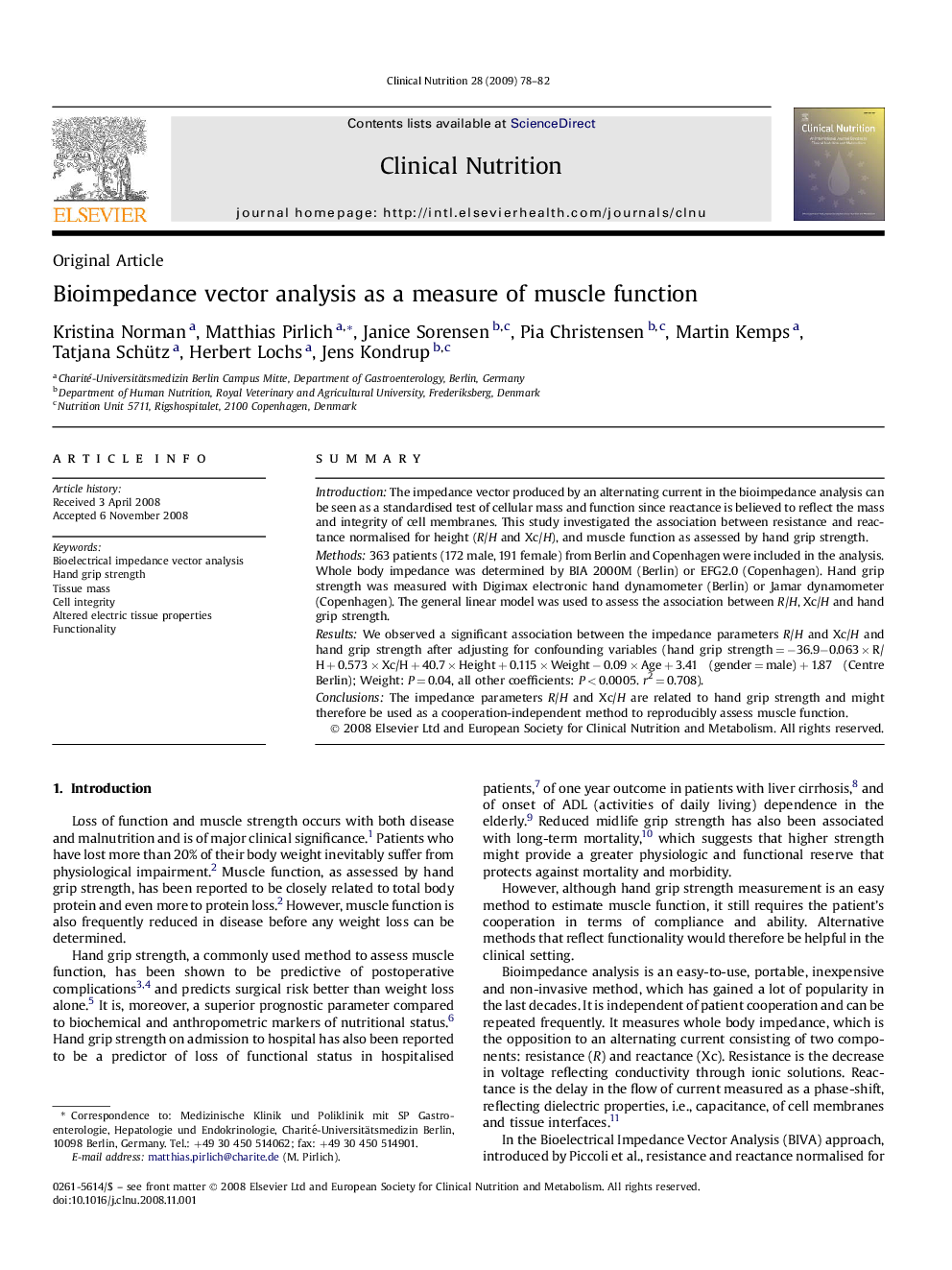| Article ID | Journal | Published Year | Pages | File Type |
|---|---|---|---|---|
| 2689945 | Clinical Nutrition | 2009 | 5 Pages |
SummaryIntroductionThe impedance vector produced by an alternating current in the bioimpedance analysis can be seen as a standardised test of cellular mass and function since reactance is believed to reflect the mass and integrity of cell membranes. This study investigated the association between resistance and reactance normalised for height (R/H and Xc/H), and muscle function as assessed by hand grip strength.Methods363 patients (172 male, 191 female) from Berlin and Copenhagen were included in the analysis. Whole body impedance was determined by BIA 2000M (Berlin) or EFG2.0 (Copenhagen). Hand grip strength was measured with Digimax electronic hand dynamometer (Berlin) or Jamar dynamometer (Copenhagen). The general linear model was used to assess the association between R/H, Xc/H and hand grip strength.ResultsWe observed a significant association between the impedance parameters R/H and Xc/H and hand grip strength after adjusting for confounding variables (hand grip strength = −36.9−0.063 × R/H + 0.573 × Xc/H + 40.7 × Height + 0.115 × Weight − 0.09 × Age + 3.41 (gender = male) + 1.87 (Centre Berlin); Weight: P = 0.04, all other coefficients: P < 0.0005. r2 = 0.708).ConclusionsThe impedance parameters R/H and Xc/H are related to hand grip strength and might therefore be used as a cooperation-independent method to reproducibly assess muscle function.
